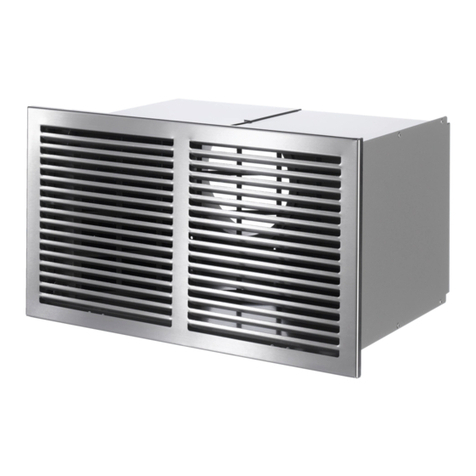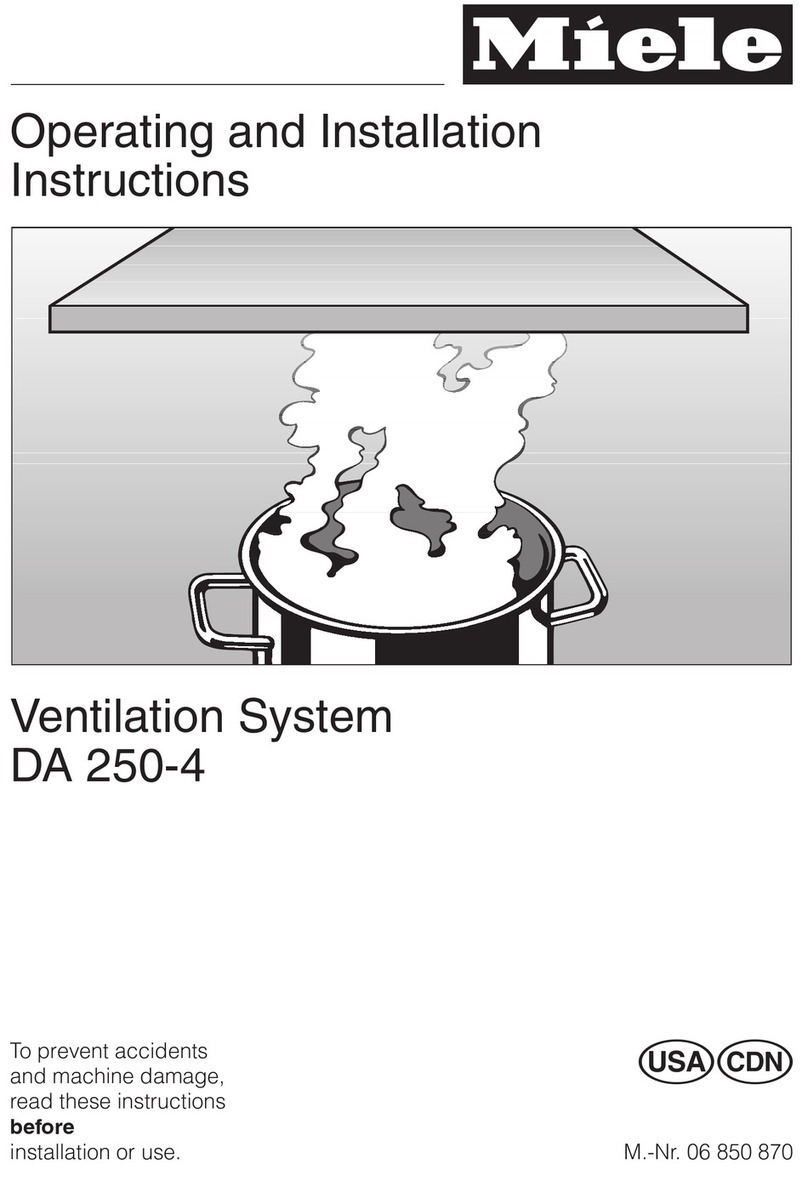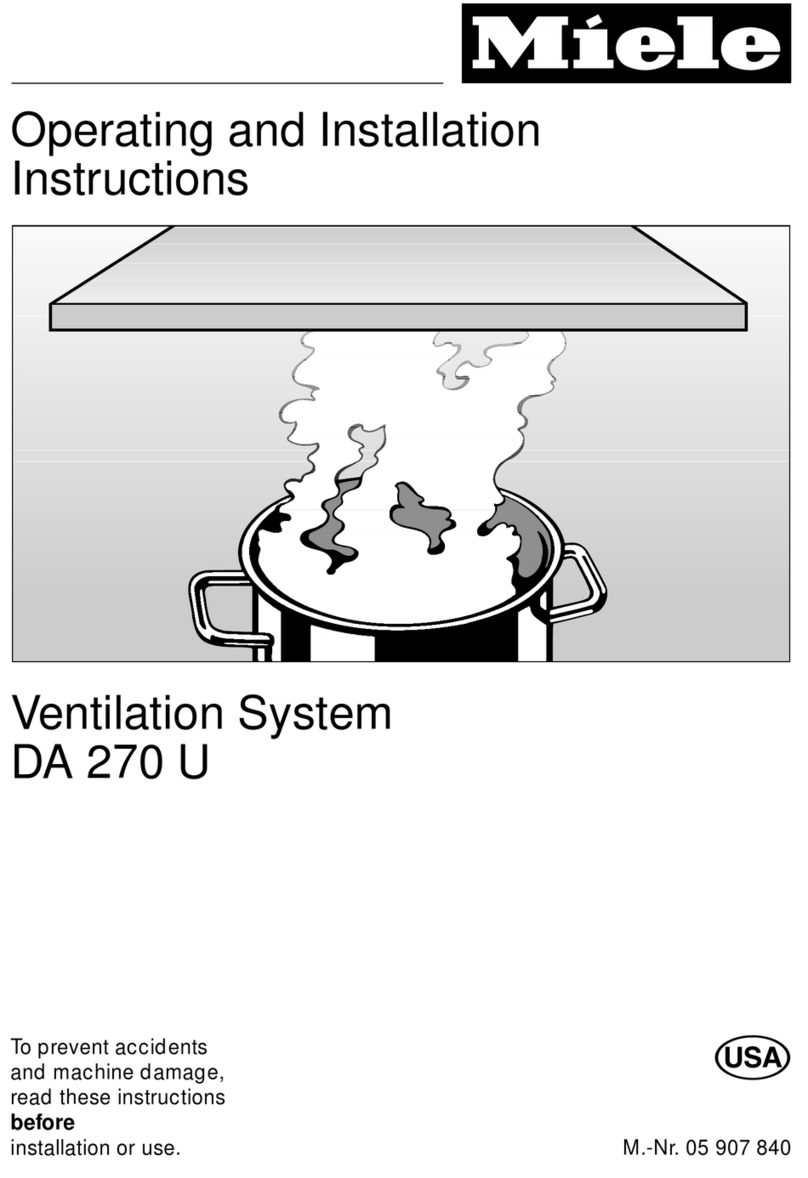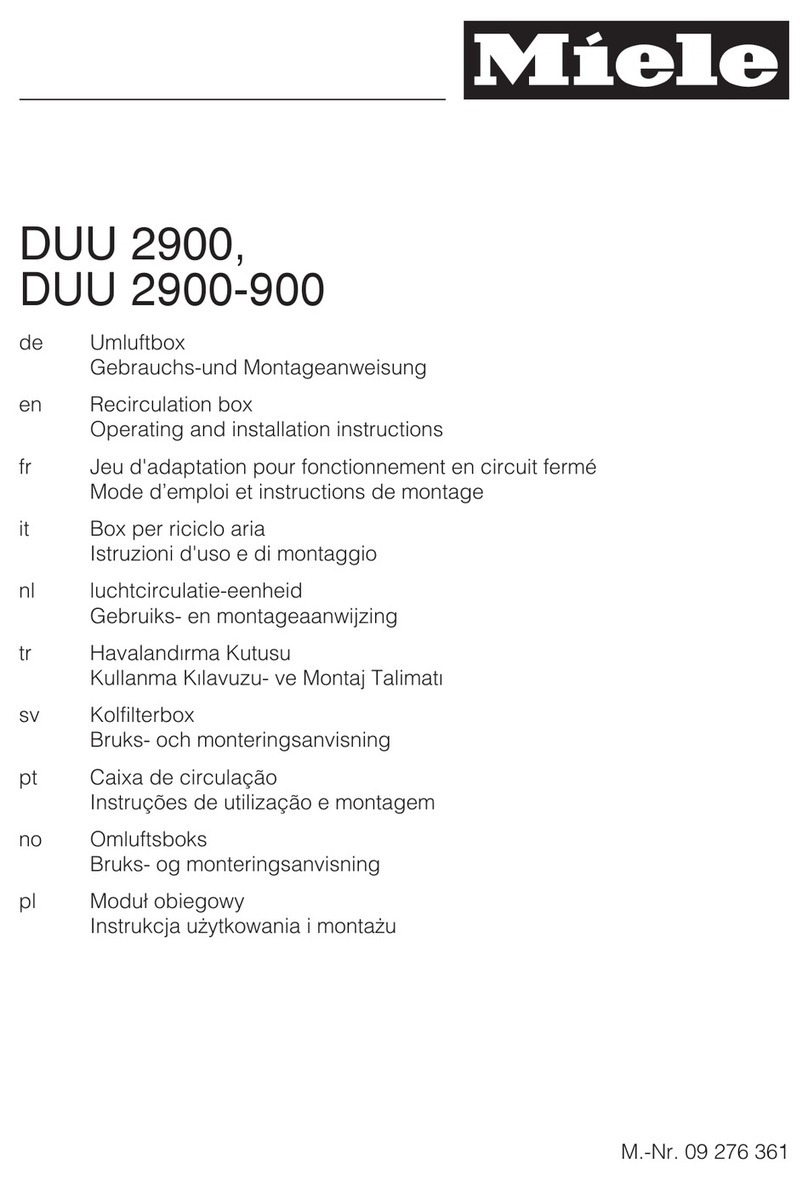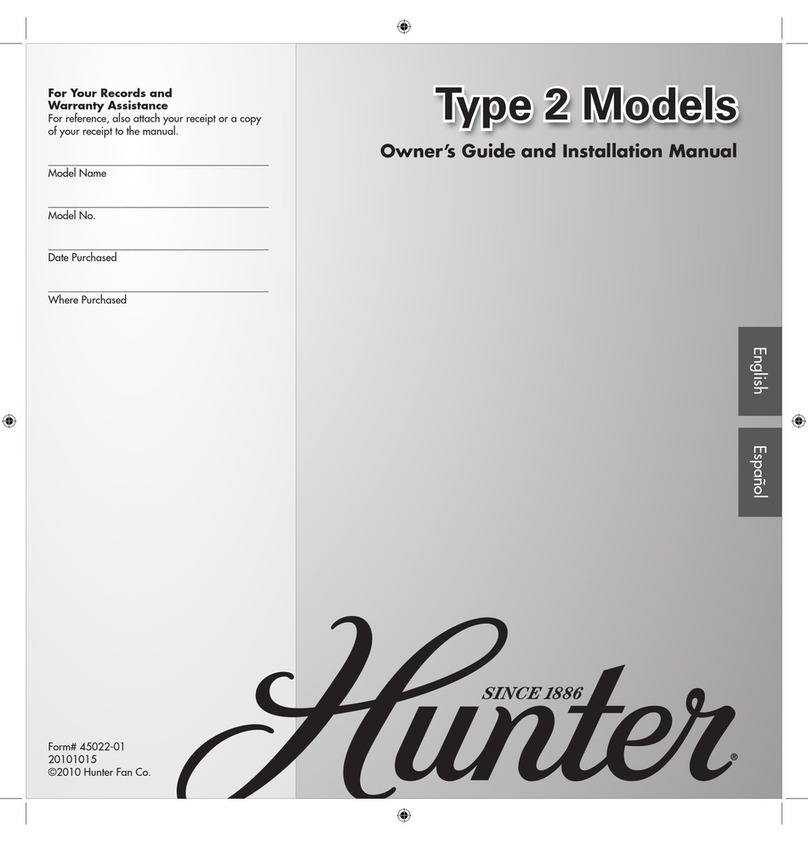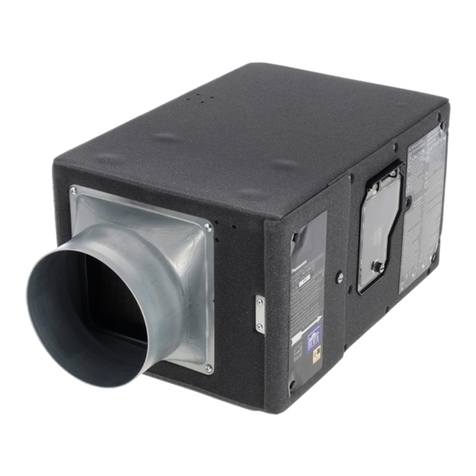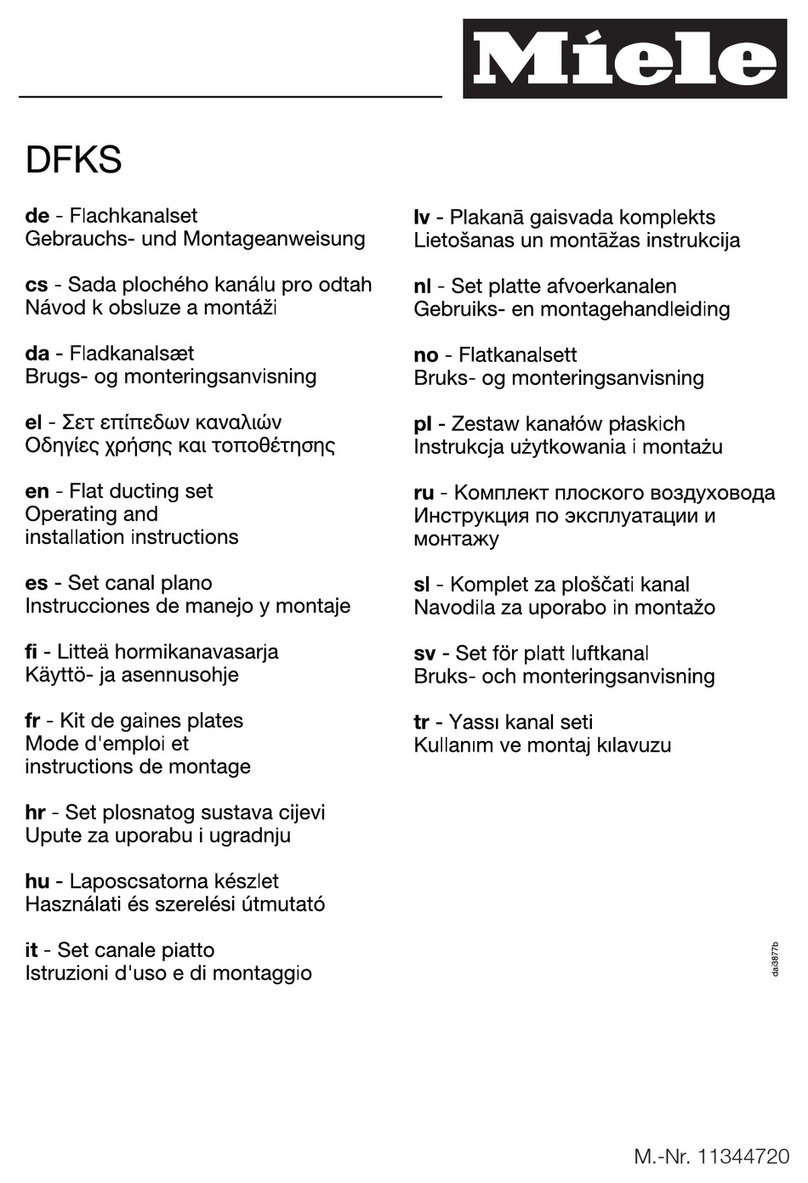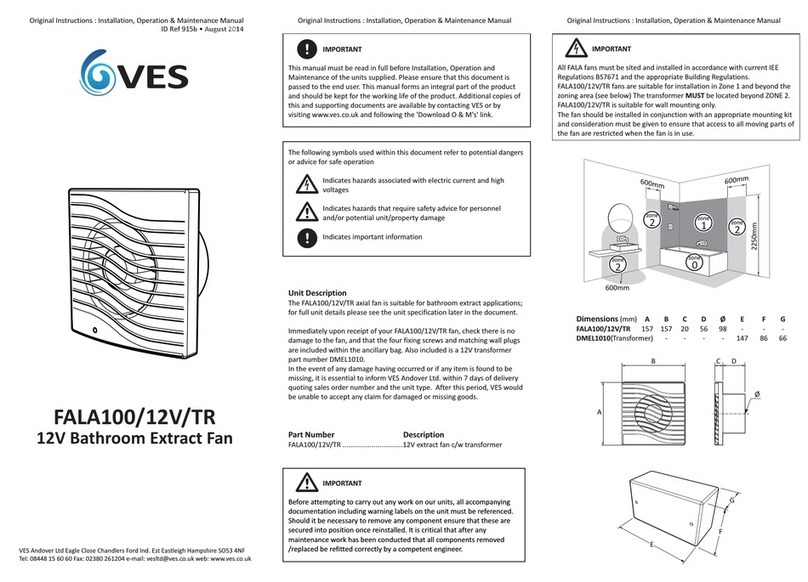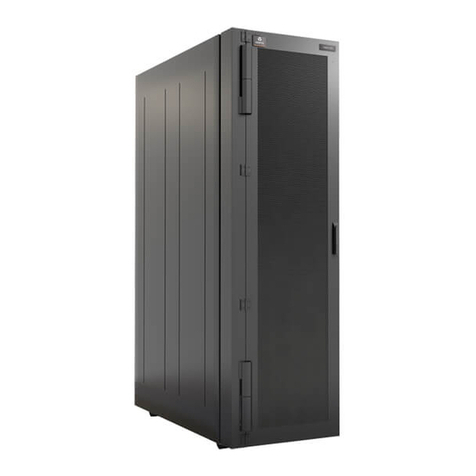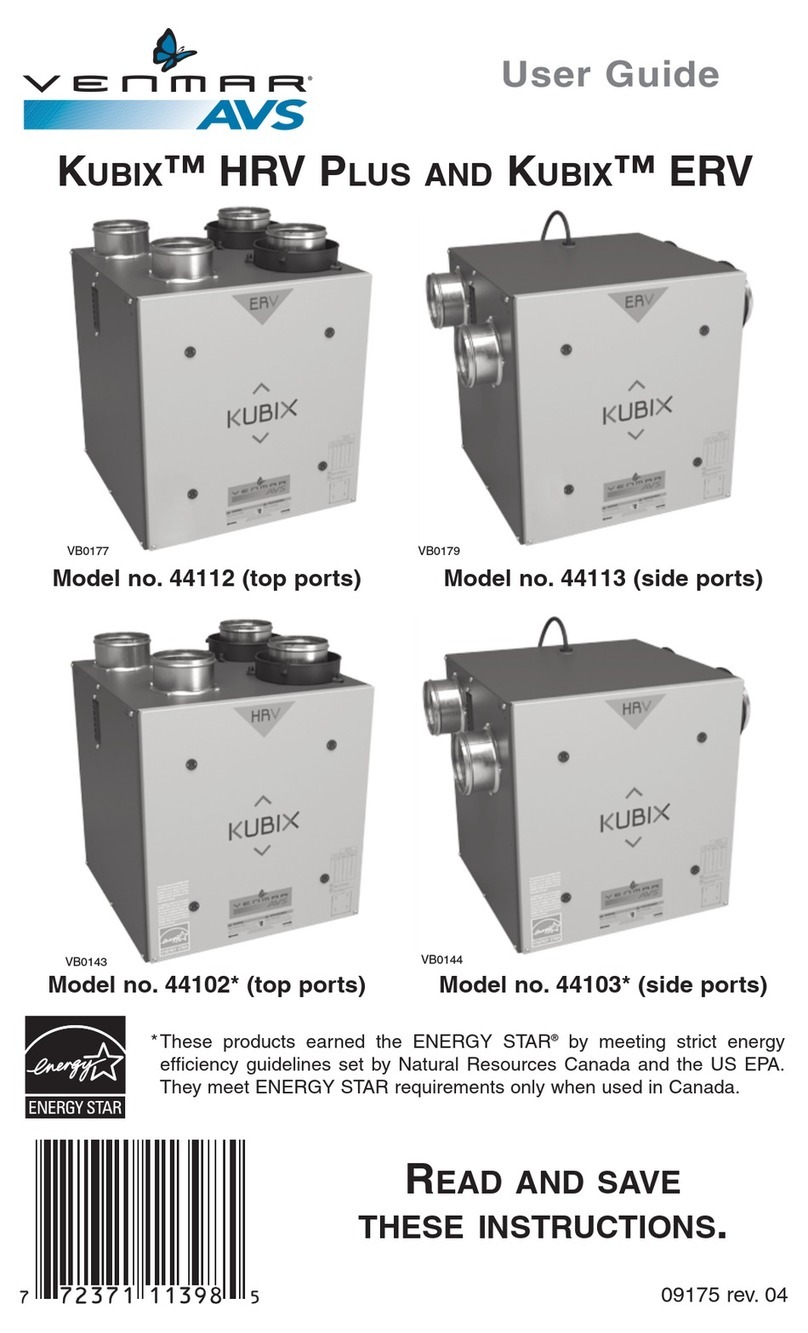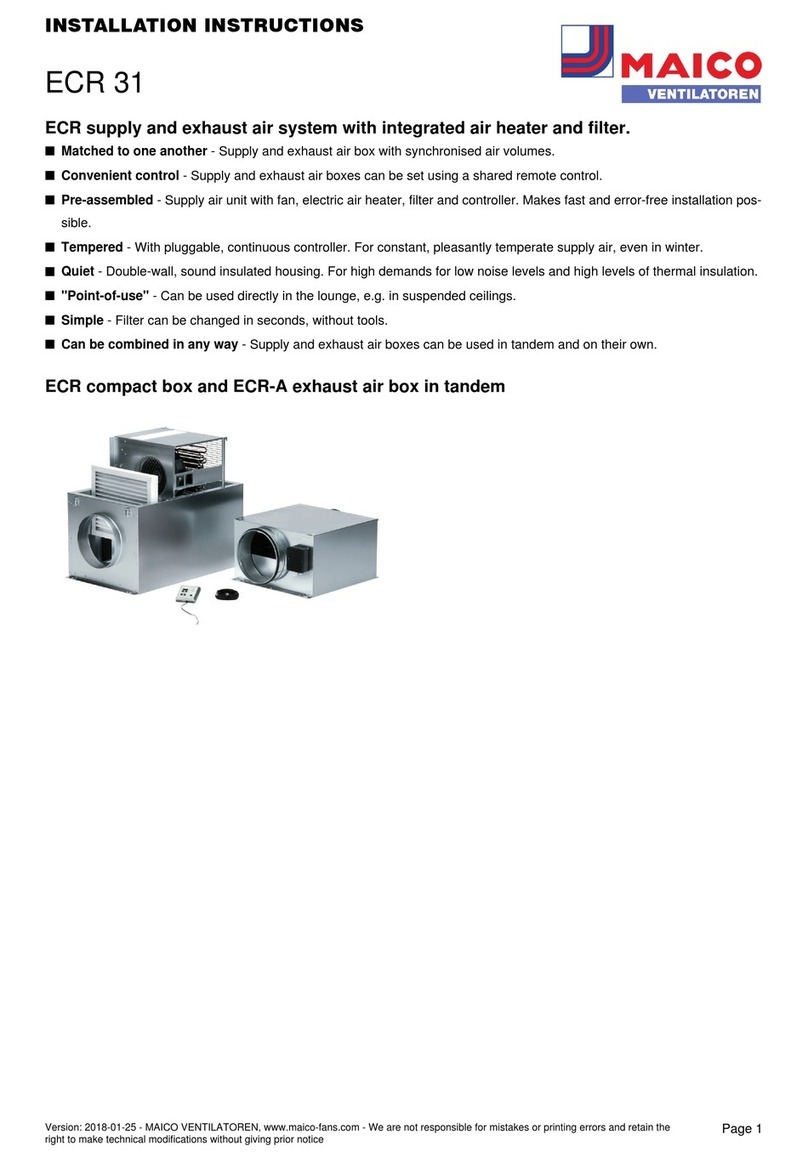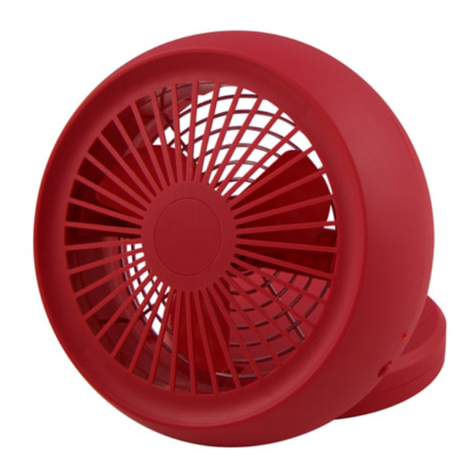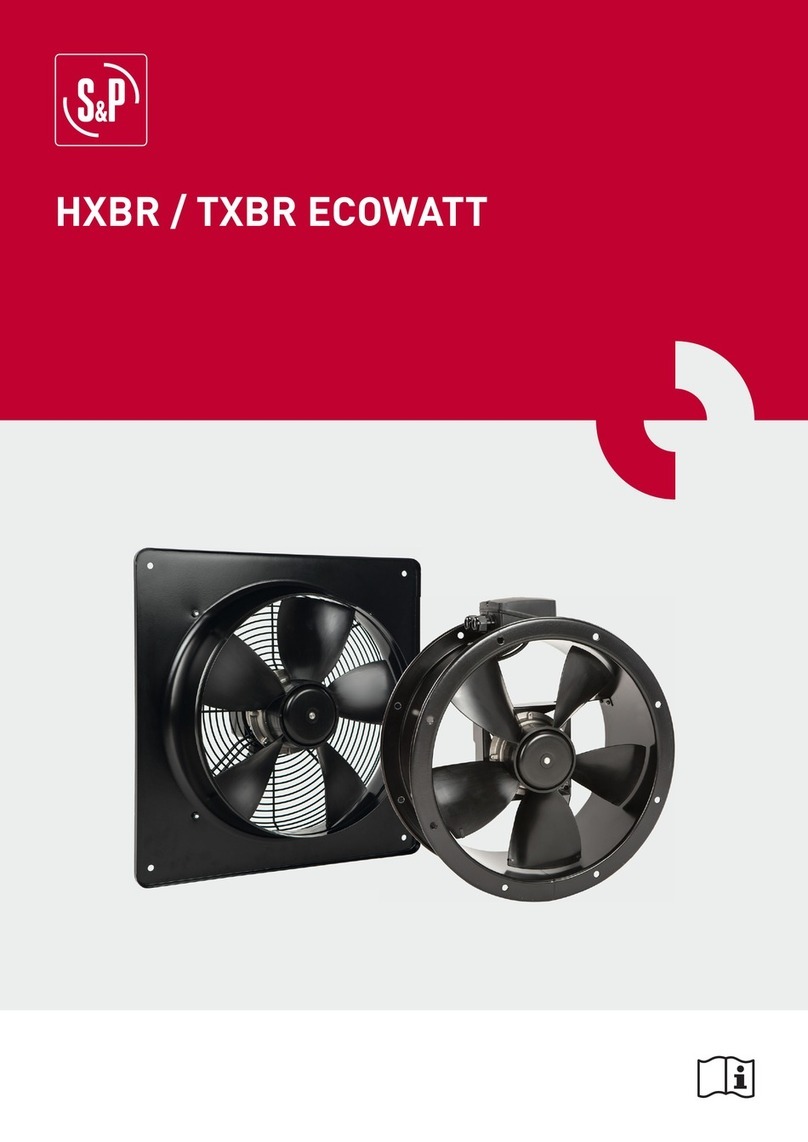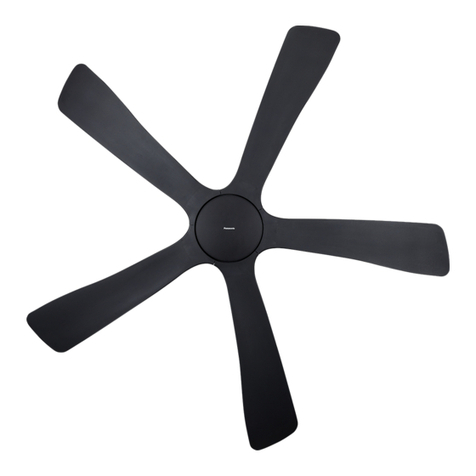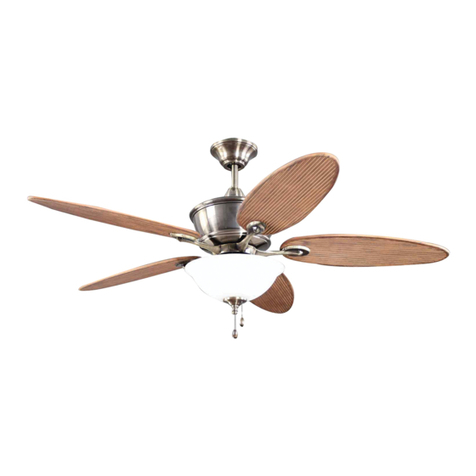This appliance complies with all
relevant safety requirements.
Inappropriate use can, however,
lead to personal injury and damage
to property.
To avoid the risk of accidents and
damage to the appliance, please
read these instructions carefully
before using it for the first time.
They contain important information
on the safety, installation, use and
maintenance of the appliance.
Keep these instructions in a safe
place and ensure that all users are
familiar with the contents. Pass them
on to any future owner of the
appliance.
Correct application
~The appliance is intended for
household use only.
~It must only be used as a domestic
appliance to extract vapours and
remove odours from cooking.
~This external motor must only be
used in conjunction with a Miele "...
EXT" model cooker hood.
Any other usage is not supported by
the manufacturer and could be
dangerous. Miele cannot be held liable
for damage resulting from incorrect or
improper use or operation of the
appliance.
Technical safety
~Before installation, check the
appliance for visible signs of damage.
Do not install and use a damaged
appliance. A damaged appliance could
be dangerous. Before connecting the
appliance to the mains electricity
supply, make sure that the voltage and
frequency details given on the data
plate correspond with the on-site
electricity supply (see "Electrical
connection" and "Technical data"),
otherwise the appliance could get
damaged. Consult a qualified
electrician if in any doubt.
~The electrical safety of this
appliance can only be guaranteed
when continuity is complete between it
and an effective earthing system which
complies with local and national safety
regulations. It is most important that this
basic safety requirement is present and
tested regularly, and where there is any
doubt, the household wiring system
should be inspected by a qualified
electrician. The manufacturer cannot be
held liable for the consequences of an
inadequate earthing system (e.g.
electric shock).
~For safety reasons, this appliance
may only be used when it has been
fully installed.
Warning and Safety instructions
4
